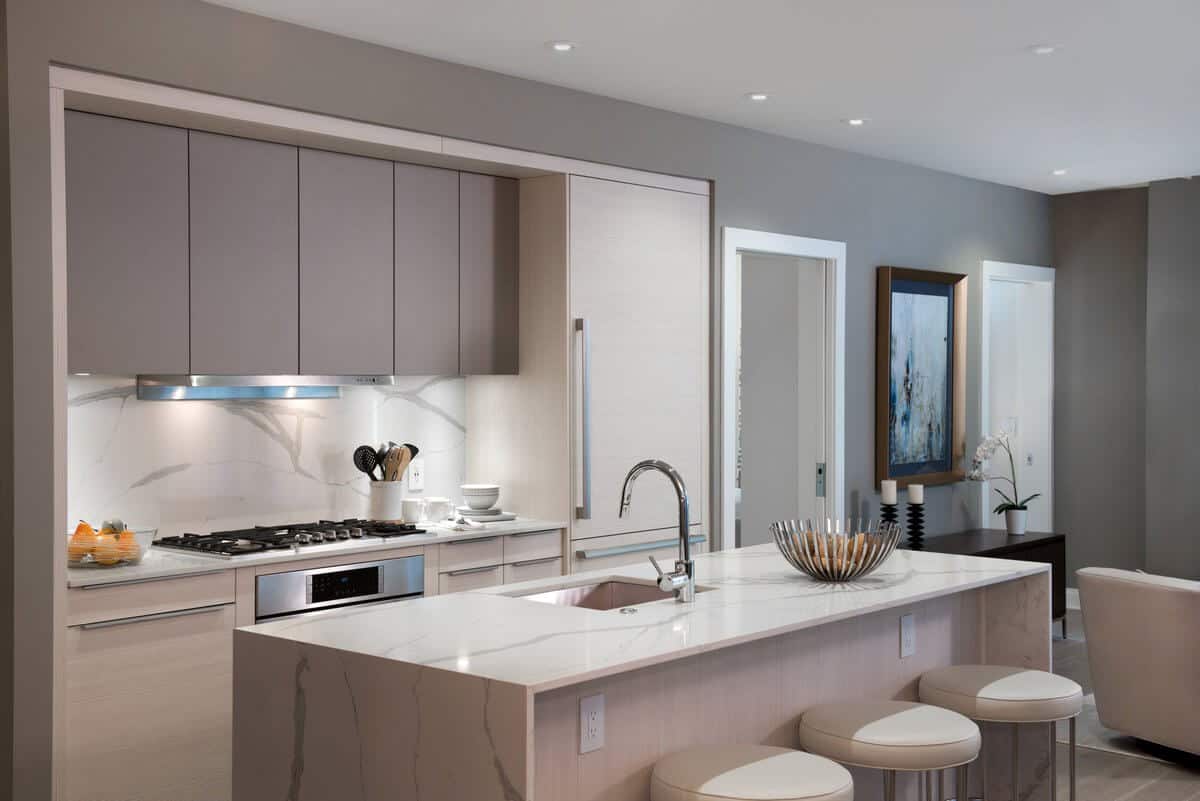Are you looking to transform your European kitchen? Are your kitchen cabinets looking worn out or outdated? Refacing them might be the perfect solution for a budget-friendly kitchen makeover. Refacing involves giving your cabinets a facelift by replacing the doors, drawer fronts, and hardware while keeping the existing cabinet boxes. It’s a DIY-level project that can breathe new life into your kitchen without the hefty price tag of a full renovation.
In this blog post, we’ll walk you through the process of refacing your kitchen cabinets step by step, providing tips and tricks to ensure a successful transformation. You’ll learn to cut and apply veneer, paint or install new wood, laminate veneer, and give your kitchen a fresh, updated look. Whether you’re a seasoned DIY enthusiast or just starting, this guide is tailored to help you achieve professional results and elevate the aesthetic appeal of your European kitchen cabinets.
Understanding Kitchen Cabinet Refacing
When it comes to revamping the heart of your home, understanding the concept of kitchen cabinet refacing can be a game-changer. In a nutshell, cabinet refacing involves giving your cabinets a facelift by replacing the doors and drawer fronts and applying a fresh veneer over the existing surfaces. This process provides a cost-effective alternative to full cabinet replacement, making it an environmentally friendly option by minimizing waste and resource consumption. To delve deeper, let’s explore the distinct advantages of this approach and how it fits seamlessly into the context of modern European kitchens.
What Is Cabinet Refacing?
Transform Your European Kitchen process that involves updating the visible parts of your cabinetry while retaining the existing cabinet framework. By replacing the doors and drawer fronts and applying a new veneer, homeowners can achieve a brand-new look for their kitchen cabinets without the hefty price tag associated with a complete replacement. This method is distinct from cabinet refinishing, which involves sanding down the existing finish and applying a new stain or paint.
Refacing not only offers an economical solution but also reduces the environmental impact by preserving the structural integrity of the cabinets and minimizing the amount of waste generated from a full replacement. This streamlined approach makes cabinet refacing an attractive option for homeowners seeking a budget-friendly and sustainable kitchen upgrade. Blum is a leading provider of cabinet hardware, known for its innovative designs and high-quality products, offering a range of solutions for cabinet refacing projects.
Benefits of Refacing for Modern European Kitchens
In the realm of modern European kitchen designs, the sleek and contemporary aesthetic appeal, coupled with a strong emphasis on sustainability, is paramount. Cabinet refacing seamlessly aligns with these principles, offering a harmonious balance between style and environmental consciousness.
The clean lines and minimalist approach often associated with modern European kitchens can be effortlessly complemented by the fresh, updated look achieved through cabinet refacing. By opting for this method, homeowners can revitalize their kitchen space while maintaining the distinctive characteristics that define modern European design sensibilities.
This approach also resonates with the sustainability focus ingrained in modern European kitchen philosophies. By choosing to reface existing cabinets rather than discarding them, homeowners can reduce their environmental footprint by minimizing the need for new materials, energy, and resources. This aligns with the sustainability ethos pervasive in European kitchen design, making cabinet refacing a practical and thoughtful choice for those seeking to modernize their kitchen spaces while upholding environmental stewardship.
The symbiotic relationship between cabinet refacing and modern European kitchen design principles makes this method a compelling option for homeowners looking to revamp their kitchen aesthetics in a cost-effective and environmentally conscious manner.
For further insights and tips on cabinet refacing, you can refer to reputable sources like Cabinet Refacing: Everything You Need to Know and Kitchen Cabinet Refacing Options and Tips.
In the forthcoming sections, we’ll explore the practical steps involved in refacing kitchen cabinets and shed light on the transformative potential of this approach in renovating and revitalizing the heart of your home.
Preparing for Cabinet Refacing
Refacing your kitchen cabinets is a cost-effective way to revamp your kitchen’s look and functionality. Before you dive into the refacing process, it’s essential to ensure that the existing cabinets are prepped and ready for the Transform Your European Kitchen. This involves thorough cleaning, accurate measurements, and careful material selection.
Cleaning and Preparing Cabinet Surfaces
To commence the cabinet refacing process, start by thoroughly cleaning the cabinet surfaces. Use a mild detergent solution and a soft cloth to scrub away any grease, grime, or residues that have accumulated over time. Pay close attention to areas around the handles, hinges, and edges. Ensure the surfaces are completely dry before proceeding to the next step.
Next, remove the cabinet doors and drawer fronts, along with any hardware such as knobs, handles, and hinges. This will provide easier access to the surfaces, allowing for a more comprehensive cleaning process. While the doors are detached, it’s also a great opportunity to inspect them for any signs of wear or damage that may require attention before the refacing materials are applied.



Leave A Comment